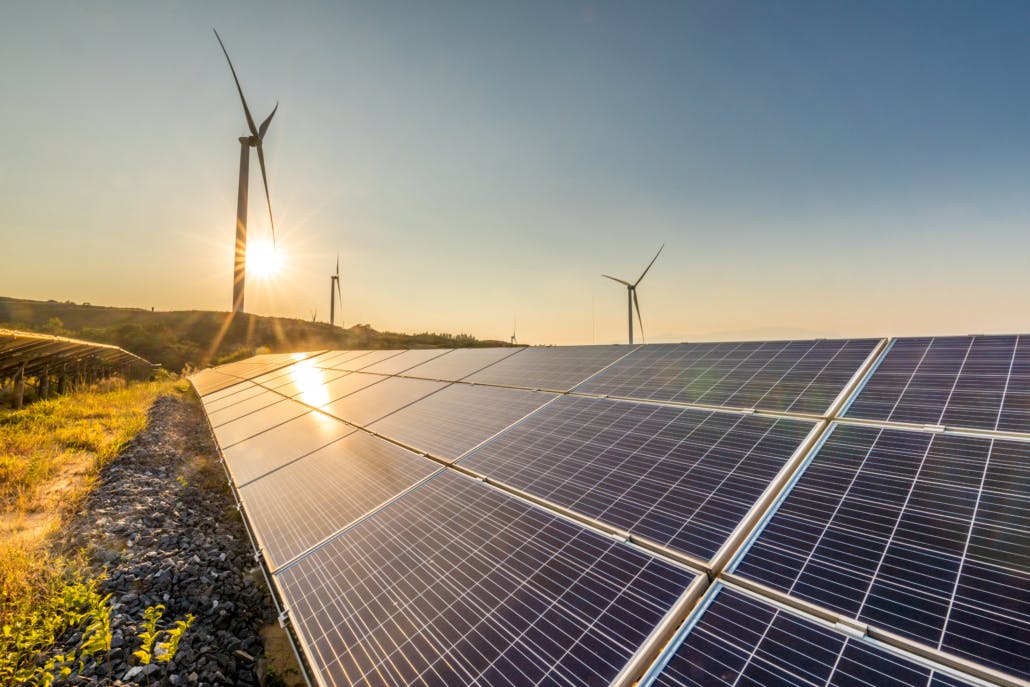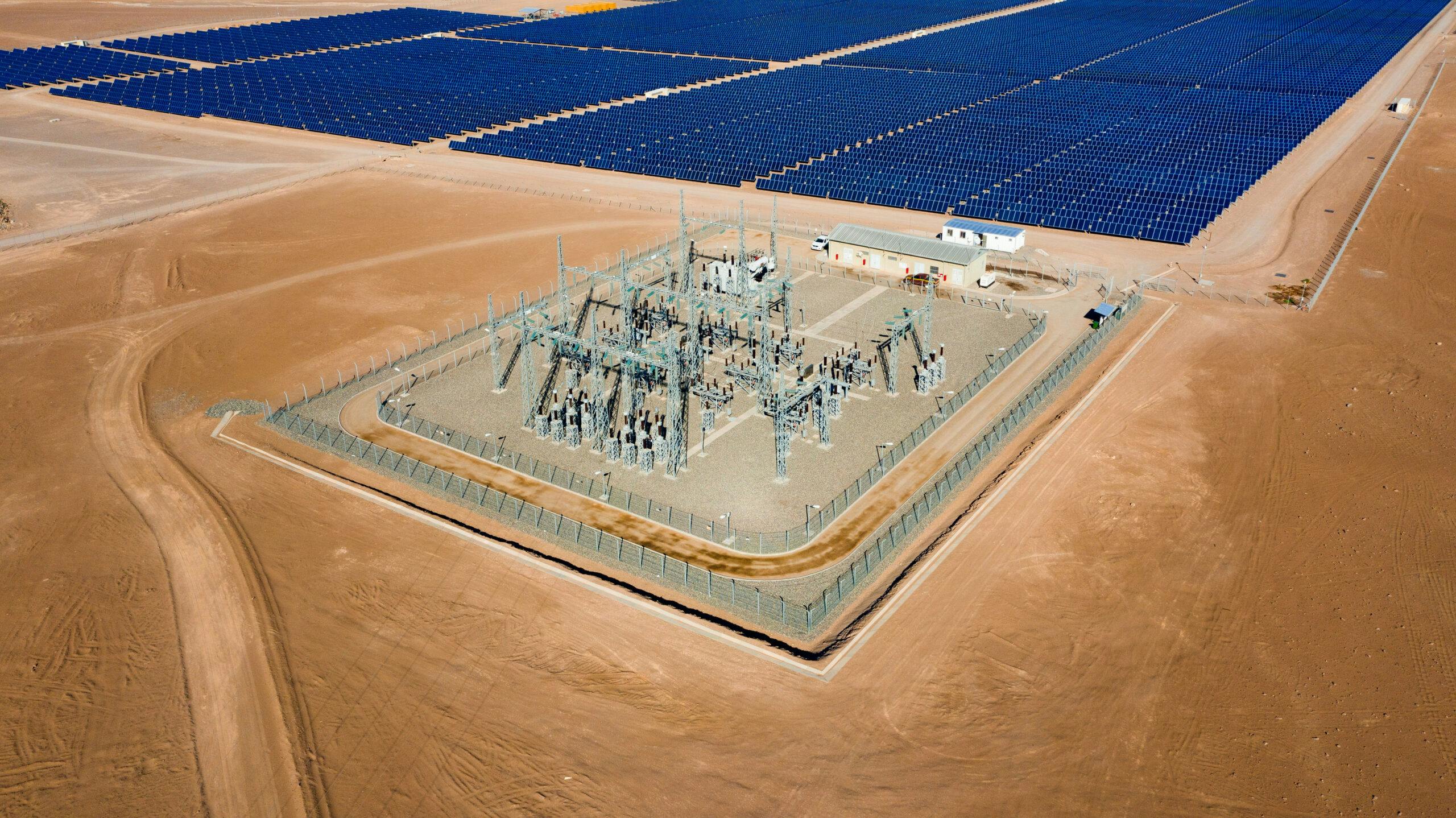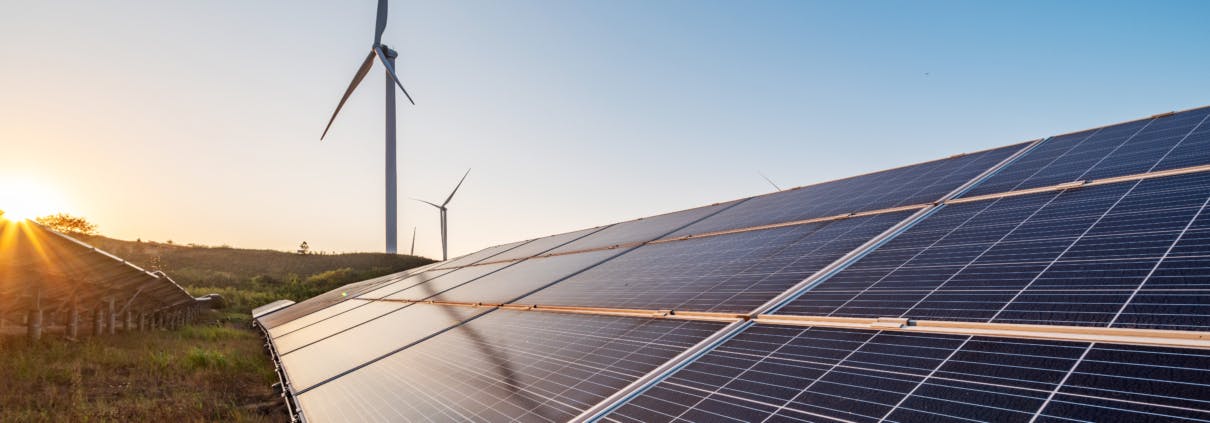LAGGARDS AND LEADERS: CLOSING THE GAP IN THE TRANSITION TO RENEWABLE ENERGY

Renewable energy is now competitive with fossil fuels in many markets, and an increasing number of companies worldwide are making the switch to cleaner power. But while some businesses have excelled in their transition to green electricity, others still have some way to go.
After years of slow progress, business demand for renewable energy has now reached fever pitch. According to recent figures from the Climate Group and CDP, the international non-profit groups which run RE100 – the coalition of major businesses committed to purchasing 100% renewable electricity – companies’ demand for renewable electricity has now surpassed that of the G7 countries.
“But many hundreds more big corporates are yet to take this relatively easy step towards net zero carbon,” said Sam Kimmins, Head of RE100 at the Climate Group in a recent statement. “To meet global climate targets, and to remain competitive in a world driven by cheap, clean electricity, it quickly needs to become the norm to power your business with renewables.”
At Atlas, we’ve seen how pioneers in various industrial sectors moving towards shifting to renewables quickly cause a ripple effect, with numerous companies swiftly following them. While one of the main driving factors behind companies’ decisions to move away from fossil fuels is to reduce the environmental impact of their business operations, our corporate clients also report bottom-line advantages, from more predictable energy costs brought about by our long-term corporate power purchase agreements (PPAs), to strengthened customer relationships and brand differentiation.
Last year, despite the disruption caused by the pandemic, research by BloombergNEF found that corporations purchased a record of 23.7GW of clean energy through PPAs, up from 20.1GW in 2019 and 13.6GW in 2018.
“More than ever before, corporations have access to affordable clean energy at a global scale. Companies no longer have an excuse for falling behind on setting and working towards a clean energy target,” said Jonas Rooze, lead sustainability analyst at BloombergNEF.
All in all, in 2020 clean energy contracts were signed by more than 130 companies, in sectors ranging from oil and gas to big tech. As more firms go green, this is not only a way to demonstrate corporate social responsibility but also to improve financial performance and reduce the carbon footprint at a time when governments are setting ever more ambitious targets to meet the objectives of the Paris Agreement.
However, although some industries are leading the way in converting their energy consumption to renewable sources, others could be doing better.
Food processing and production
According to the Food and Agriculture Organization (FAO), the food sector accounts for around a third of the world’s total energy consumption. The two most energy-intensive activities are found within agricultural production and processing and are dependent largely on the use of fossil fuels. Reducing direct carbon emissions by moving to cleaner energy is an urgent task for the industry and one that several companies have started to take on.
In July this year, PepsiCo achieved its goal of using 100% renewable energy across all operations in Mexico, its second-largest market. This came less than a year after the company reached a similar milestone in the United States, its largest market. The company plans to source 100% renewable electricity across all of its company-owned and controlled operations by 2030, and 100% renewable electricity across its entire franchise and third-party operations by 2040. If it meets its goals, the company calculates it could reduce approximately 2.5 million tons of GHG emissions by 2040, the equivalent of taking more than half a million cars off the road for a full year.
To do this, it is employing several solutions, including PPAs that will support the development of new projects such as solar and wind farms around the world, as well as purchased renewable energy certificates (RECs).
Another company looking to use more renewable energy is Nestlé. As part of its 2050 net-zero ambition, unveiled in 2019, it has pledged to continue to ramp up its use of renewable electricity to reach 100% by 2025, up from 34.5% in 2018, and says it plans to use PPAs, green tariffs, RECs and on-site production to do so.
These companies, alongside peers such as Diageo and Mars, are taking bold steps towards helping to drive the global transition to clean power – and this looks likely to win them new customers.
More and more, people are demanding cleaner, more sustainable energy. A survey conducted in the US in 2019 by the Pew Research Center found that 77% of respondents believe that developing “alternative energy” is a more important priority right now than producing more fossil fuels in order to reduce the effects of climate change. As consumers increasingly vote with their wallets, companies that are aligned with their values are positioned to take market share from companies that don’t move with the times.
Fortunately, companies within the food industry that haven’t yet taken steps towards cleaning up their electricity use aren’t too late. The availability of sourcing models for renewable electricity has advanced significantly in recent years, and there are numerous options available for companies of all types.
Pulp and paper
The pulp and paper industry was arguably one of the most unlikely beneficiaries of the Covid-19 pandemic, experiencing skyrocketing demand amid the increased need for personal hygiene products, food packaging products, corrugated packaging for online shopping deliveries, and other paper-based materials. Like most major manufacturing operations, papermaking is an energy-intensive endeavor, and as paper-based production increases, the industry may fail to achieve its emission reduction target due to the rapid growth of greenhouse gas emissions.
In a recent report, the International Energy Agency (IEA) highlights the sector as needing “more effort” if it is to reduce its emissions. Among its recommendations are for the industry to increasingly recover and use pulp and paper production by-products such as black liquor to displace a portion of fossil fuel use.
However, simply using more biomass energy won’t be enough to turn the sector green, the report says. It calls for companies to pursue the use of other renewable energy sources, particularly for recycled production, for which natural gas tends to be employed because biomass by-products are not readily available.
Textiles and garments
The fashion industry is another sector that has an enormous opportunity to harness the power of renewables in order to drive a more sustainable future. Every stage of the textile industry’s supply chain is energy-intensive, from processing yarn, producing fabric, and fabricating textiles, to transporting and selling clothes to customers, and several major fashion brands are now looking at reducing greenhouse gas emissions by powering all their global operations with renewable energy.
As part of the global RE100 initiative, well-known brands from H&M to Nike, Burberry and Ralph Laur
en have already committed to sourcing 100% of their electricity from renewable suppliers by 2050 at the latest, and some are also running programs to ensure their suppliers also reduce their greenhouse gas emissions by switching to green energy.
Kingwhale, a Taiwan-based textile mill, recently joined the RE100 initiative, pledging to achieve 100% renewable electricity by 2040, but it’s the only Asia-Pacific-based textile manufacturer to do so.
Within the garment industry, there is a growing divide between renewable energy transition pioneers and their less energy-efficient peers, and much as scandals over labor practices within textile supply chains have damaged the image of brands in recent years, companies that don’t operate more sustainably in terms of energy use and consumption risk alienating their customers.
Closing the gap
Across some of the world’s biggest industries, a clear gap is emerging between those companies that have already made progress in the energy transition, and those that are yet to take the first step. Bringing the performance of the laggards in line with the pioneers will be crucial if the objectives laid out in the Paris Agreement are to be met – but it’s also a matter of survival. In the post-Covid world, consumers are increasingly focused on the sustainability credentials of the companies they buy from, and making the switch from polluting fossil fuels to clean energy sends a strong signal that, when it comes to fighting climate change, businesses mean business.
Share This Entry


